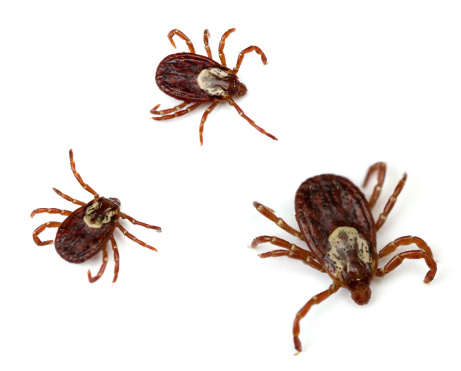Tiny ticks pose big problems

Summer is in full swing and we’re spending more and more time outside having fun in the sun. But experts say that people, especially children, need to be aware of some tiny critters that can make us miserable.
About the size of a poppy seed, ticks pose a health threat to everyone, especially kids ages 5 to 14, warns the Tick-Borne Disease Alliance (TBDA). Children attending summer camps in woodsy areas are especially vulnerable, the TBDA says.
Ticks are parasites that feed on the blood of mice, chipmunks, birds, squirrels, rabbits and deer. They are active year-round, but summer is the peak season for these pests, says the TBDA. Bites from the creatures can transmit Lyme disease and other infections.
The Centers for Disease Control (CDC) says symptoms from tick bites may include fever, chills, aches, pains and a rash. If left untreated, it can affect any part of the body, including the heart, brain, nervous system, muscles and joints.
With ticks hiding in lawns, woodlands, brush piles, woodpiles and even on picnic tables, protecting kids can be challenging.
The CDC recommends using insect repellents that have 20 percent or more DEET on all exposed skin. They also advise applying an insecticide that contains permethrin to clothing.
There are also some simple protective measures parents can take when it comes to protecting kids, says the TBDA.
They recommend checking with your summer camp to see if they are aware of the dangers posed by ticks and whether they have a tick management program in place. Camp leaders should also notify parents when an embedded tick is found and seek medical treatment for the camper.
The TBDA also suggests that parents and caregivers teach children how to check their bodies for ticks. The creatures like to attach themselves to moist areas of the body. Armpits, behind the knees and between the toes, are some favorite spots.
If an embedded tick is spotted, the CDC advises that there is no reason to panic. The tick can be removed by using fine-tipped tweezers. Grab the tick as close the skin’s surface as possible and pull upward with a steady movement avoiding any twists which can leave some of the tick embedded in the skin.
After removing, clean the affected area with rubbing alcohol, an iodine scrub or soap and water, the CDC says.
Related Posts
Comments
About the Author
health enews staff is a group of experienced writers from our Advocate Health Care and Aurora Health Care sites, which also includes freelance or intern writers.

















